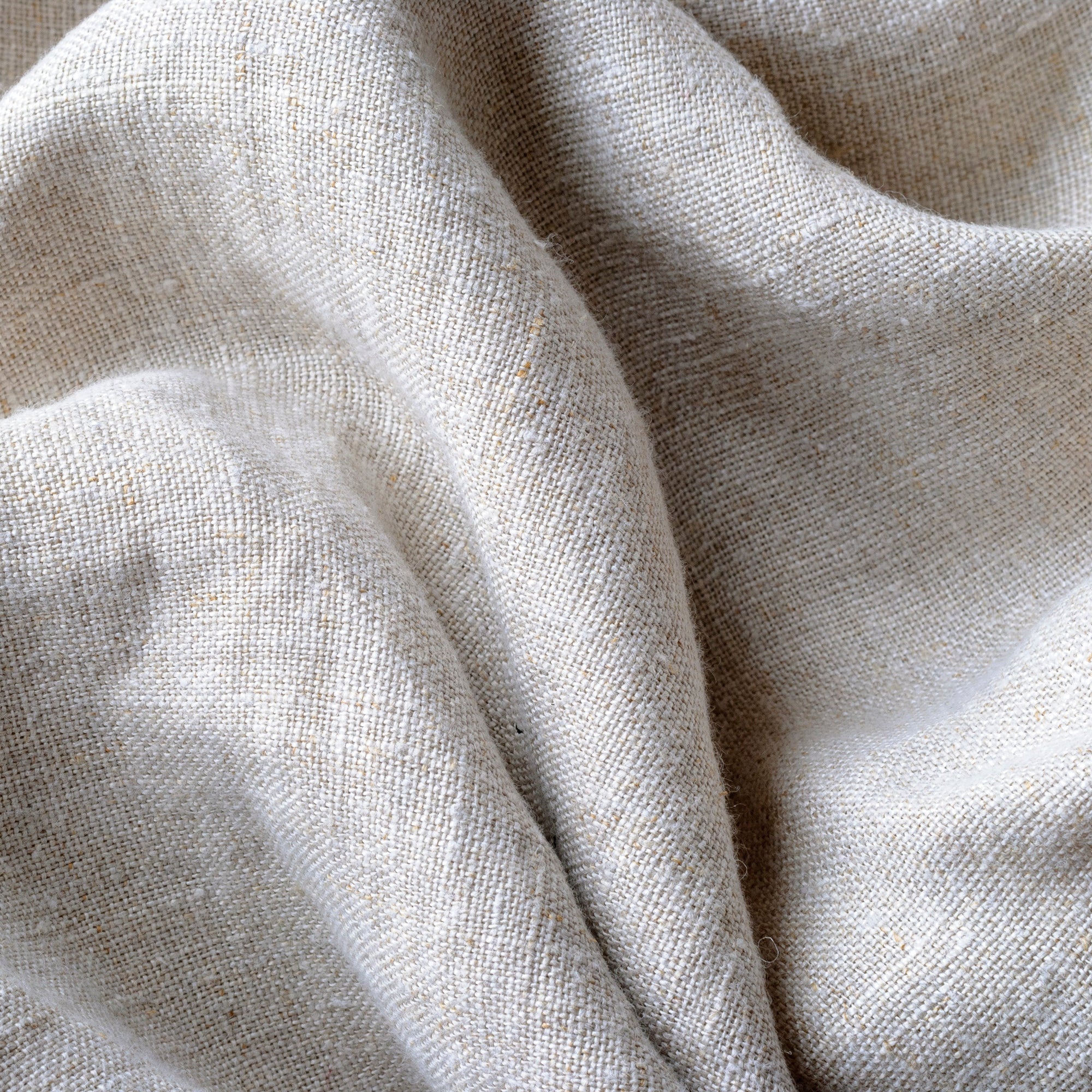Linen

Linen is a natural fiber from the flax plant, which is grown with low water consumption and without pesticides. It is tear-resistant, breathable, dirt-repellent, and completely biodegradable—ideal for durable, sustainable textiles and home products.
What is linen?
Linen is one of the oldest and most refined natural fibres in the world. It is made from the stalks of the flax plant and is known for its high strength, breathability and natural sheen.
As a durable material, linen is used for clothing, home textiles and upholstery fabrics. Thanks to its cooling properties, it feels especially pleasant to wear in summer. It is also dirt-repellent, long-lasting and fully biodegradable.
How is linen produced?
Linen is made from the flax plant, which thrives in the temperate climates of Europe – particularly in France, Belgium and the Netherlands. After harvesting, the stalks are retted, broken and scutched to extract the long, smooth fibres. These are then spun into yarn and woven or knitted into fabric.
The production of linen is largely mechanical and requires little use of chemicals, which makes it an especially environmentally friendly fibre.


Environmental footprint of linen
Linen is considered an extremely sustainable natural fibre. Flax cultivation requires significantly less water and fertiliser than cotton and can be grown without pesticides. Moreover, flax improves soil structure and is often used as a rotation crop in sustainable farming systems.
1. Sustainability of raw material sourcing
Flax grows quickly, is hardy and requires little maintenance. As nearly all parts of the plant are used, there is virtually no waste – a prime example of efficient resource use.
2. Processing and energy demand
The processing of linen requires comparatively little energy. Mechanical methods such as breaking and scutching the fibres make chemical treatments unnecessary. Many linen fabrics are produced in Europe, ensuring short transport routes and a low carbon footprint.

3. Durability
Linen is exceptionally strong and long-lasting. With every wash, the fabric becomes softer without losing its structural integrity. It is resistant to dirt and has natural antibacterial properties.
4. Reusability
Pure linen fabrics are generally recyclable and can theoretically be reprocessed into new textiles or insulation materials. In practice, however, this rarely happens, as fibre recycling is technically complex and economically uncommon. Thanks to its high durability, linen products are typically used for many years and can be composted or thermally recycled at the end of their life cycle.
5. Biodegradability
Untreated linen is fully biodegradable and decomposes in nature without leaving residues – an ideal material for a circular economy.
Technical properties of linen
| Property | Value |
|---|---|
| Material type | Plant fibre (flax) |
| Density | Approx. 1.5 g/cm³ |
| Tensile strength | Very high |
| Elasticity | Low – dimensionally stable |
| Moisture absorption | Up to 20% without feeling damp |
| Resistance | Antibacterial, dirt-repellent, allergy-friendly |
| Weather resistance | Good, sensitive to prolonged humidity |
| Colour | Light beige to grey (natural) |
| Workability | Very good – ideal for woven and knitted fabrics |
| Typical uses | Bedding, clothing, table and home textiles, upholstery fabrics |
Linen at ekomia
For us, linen embodies pure naturalness and elegance. Its cool touch, durable texture and sustainable cultivation make it the ideal fabric for our bedding and home textiles. Especially for our sofa covers, linen is the natural material of our choice.
Our linen products are unbleached or gently dyed, breathable, vegan and wonderfully soft on the skin. They perfectly reflect our commitment to timeless design and responsible materials.

Questions & answers for Linen
Here we answer some questions about Linen that are frequently asked by other users.
Do you still have any questions?
Do you have any questions or comments on this topic? Write a comment, we will be happy to answer.









